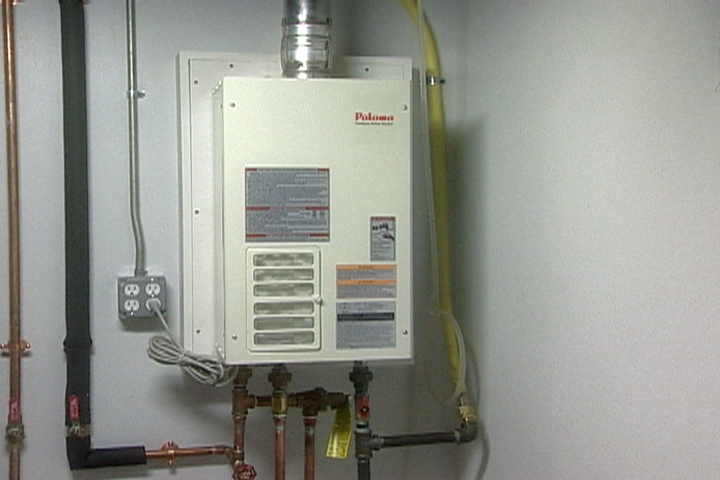The content in the next paragraphs in relation to How to Maintain a Hot Water Heater in a Few Simple Steps is indeed remarkable. Read it yourself and see what you think about it.

Warm water is necessary for day-to-day comfort, whether it's for a refreshing shower or washing dishes. To ensure your hot water system runs efficiently and lasts much longer, normal upkeep is key. This write-up supplies functional suggestions and insights on exactly how to maintain your home's hot water system to avoid disturbances and pricey repair services.
Introduction
Maintaining your home's hot water system might seem daunting, yet with a couple of basic steps, you can ensure it operates efficiently for several years ahead. This guide covers whatever from recognizing your warm water system to do it yourself upkeep suggestions and knowing when to hire professional aid.
Relevance of Keeping Your Warm Water System
Routine maintenance not just expands the life expectancy of your hot water system but also guarantees it runs efficiently. Ignoring maintenance can bring about reduced efficiency, greater energy expenses, and even premature failing of the system.
Indicators Your Hot Water System Demands Upkeep
Knowing when your warm water system requires interest can prevent significant issues. Keep an eye out for indications such as inconsistent water temperature level, unusual noises from the heating system, or corroded water.
Comprehending Your Hot Water System
Prior to diving into upkeep jobs, it's useful to understand the fundamental components of your warm water system. Normally, this consists of the hot water heater itself, pipes, anode poles, and temperature controls.
Month-to-month Maintenance Tasks
Regular regular monthly checks can aid catch minor problems prior to they intensify.
Flushing the Hot Water Heater
Flushing your hot water heater removes debris buildup, boosting effectiveness and lengthening its life.
Checking and Changing Anode Rods
Anode rods protect against rust inside the container. Checking and changing them when worn out is vital.
Examining and Changing Temperature Level Setups
Adjusting the temperature level settings makes sure optimal performance and safety and security.
DIY Tips for Maintenance
You can execute a number of upkeep tasks yourself to maintain your hot water system in leading problem.
Checking for Leakages
Regularly examine pipelines and links for leaks, as these can cause water damages and higher expenses.
Testing Pressure Alleviation Valves
Testing the pressure relief valve guarantees it functions correctly and stops too much pressure accumulation.
Shielding Pipes
Protecting warm water pipelines reduces warm loss and can conserve power.
When to Call a Professional
While DIY maintenance is helpful, some issues require expert know-how.
Complex Issues Needing Specialist Aid
Instances include major leaks, electric troubles, or if your hot water heater is consistently underperforming.
Routine Expert Upkeep Perks
Specialist upkeep can include comprehensive evaluations, tune-ups, and guaranteeing compliance with security requirements.
Final thought
Normal upkeep of your home's warm water system is crucial for efficiency, longevity, and expense financial savings. By adhering to these pointers and recognizing when to look for specialist aid, you can make certain a reliable supply of hot water without unexpected disruptions.
How to Maintain an Instant Hot Water Heater
Before tinkering with your hot water heater, make sure that it’s not powered on. You also have to turn off the main circuit breaker and shut off the main gas line to prevent accidents. Also turn off the water valves connected to your unit to prevent water from flowing into and out of the appliance. 2. When you’re done, you have to detach the purge valves’ caps. These look like the letter “T†and are situated on either side of the water valves. Doing so will release any pressure that has accumulated inside the valves while at the same time avoid hot water from shooting out and burning your skin. 3. When the purge valves’ caps are removed, you have to connect your hosing lines to the valves. Your unit should have come with three hoses but if it didn’t, you can purchase these things from any hardware or home repair shops. You can also get them from retail stores that sell water heating systems. Read the user’s manual and follow it to complete this task properly. When the hosing lines are connected, open the purge port’s valves. 4. You should never use harsh chemical cleaners or solutions when cleaning your unit. Make use of white vinegar instead. It should be undiluted and you’ll probably use about 2 gallons. 5. Now flush your water heater. This task should probably take about 40 minutes. We can’t give you specific directions for this because the procedure is carried out depending on the type, model and brand of your heater. With that being said, refer to the user’s manual. 6. When you’re done draining the unit, you have to turn off the purge port valves again. Remove the hosing lines that you earlier installed on each of the water valves. Put the valve caps (purge port) back in their respective places and be very careful so as not to damage the rubber discs that are found inside these caps. 7. Now that everything’s back in place, check your user’s manual again to find out how to reactivate your water heating system. 8. Once it is working, turn one of your hot water faucets on just to let air pass through the heater’s water supply pipes. Leave the tap on until water flows smoothly out of it. https://www.orrplumbing.com/blog/2014/september/how-to-maintain-an-instant-hot-water-heater/

Do you appreciate reading up on What Kind of Maintenance Do Water Heaters Need?? Place feedback below. We'd be delighted to know your opinions about this entry. We hope to see you back again in the future. If you appreciated our article kindly make sure you remember to pass it around. I enjoy your readership.
Click Here